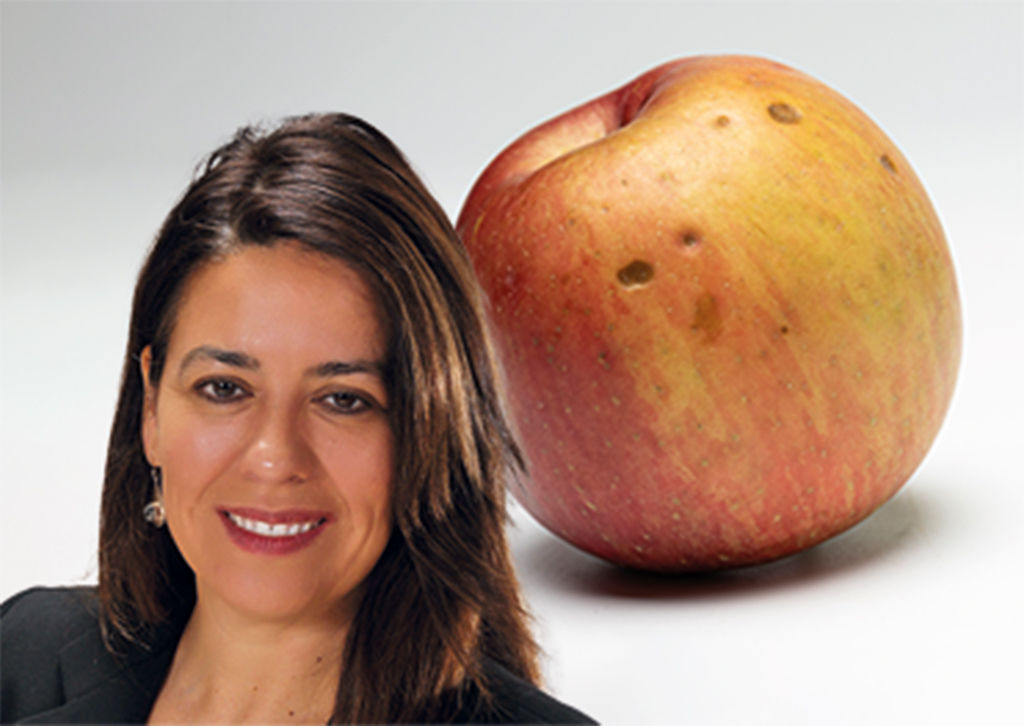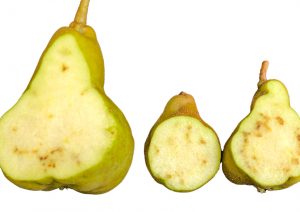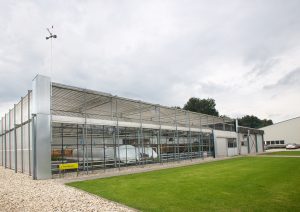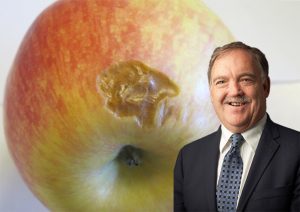
Lenticel breakdown disorder
What are the pre- and postharvest risk factors, and how can they be mitigated? By Anna Mouton.
Lenticel breakdown in apples is characterised by dimpling and pitting of the skin around lenticels. The lesions usually appear within days of packing and darken and expand over time. The fruit flesh is mostly normal, but the affected fruit are unmarketable due to aesthetic reasons.
“This is a problem in many apple-producing areas in the world,” said Prof. Carolina Torres, Endowed Chair in Tree Fruit Postharvest Systems in the Department of Horticulture at Washington State University. Torres discussed lenticel breakdown in a presentation at the recent Hortgro Science Postharvest Symposium.
What do we already know?
Lenticels are non-functional stomata that normally become covered by the cuticle. In hot and dry environments, the cuticle sometimes fails to keep up with rapid fruit expansion, leading to cracks that expose lenticels and skin cells to damage.
The unprotected skin cells are vulnerable to abiotic stressors such as high irradiance and low relative humidity, which can cause dehydration and cell death in the 3–4 weeks leading up to harvest.
Additionally, cuticular cracks allow any substances applied to the fruit surface, such as crop protectants and foliar feeds, to come into direct contact with the lenticels and skin cells.
“In research with Eric Curry, in 2008, we coated fruit with commercial coatings right after harvest before moving them to the pack house,” said Torres. “The coating covered all the cracks, and we saw a reduction in the incidence and severity of lenticel breakdown, because the fruit were protected during the packing process.”
Lenticel breakdown is one of several lenticel-related and postharvest spotting disorders of apples. “The characteristic of lenticel breakdown is that symptoms mostly appear 12–72 hours after packing,” explained Torres. In contrast, heat injury and calcium burn are present at harvest.
Whereas blotch pit and bitter pit can also develop or progress after harvest, browning associated with these disorders extends to the apple flesh. In blister spot, affected lenticels are raised rather than sunken and eventually develop a crust.
“These disorders can look different, depending on severity and skin colour,” cautioned Torres. “They are often misidentified, especially in the pack house. But you must have the right identification because they are managed differently.”
Preharvest risk factors
Cultivar susceptibility is a significant risk factor for lenticel breakdown. According to Torres, Gala, especially Royal Gala, is most vulnerable, and Fuji, especially BC2, is also frequently affected. Other cultivars, including Braeburn, Granny Smith, Golden Delicious, and Red Delicious, can also develop lesions.
The variation in cultivar susceptibility is likely due to differences in lenticel numbers. Fruit with a higher lenticel density are more prone to lenticel breakdown.
As with many postharvest disorders, harvest maturity plays a crucial role in lenticel breakdown, with post-optimum fruit being more susceptible. Higher starch breakdown and lower firmness are correlated with more lenticel breakdown.
“Another preharvest factor that we always worry about, because it has a great effect on fruit quality overall, is the mineral content,” said Torres. “But it hasn’t been directly correlated with lenticel breakdown.”
However, mineral imbalances reduce storage potential, and research in Washington State has shown that lenticel breakdown is more severe in fruit with low calcium concentrations relative to other cations, such as potassium, magnesium, and nitrogen.
“We did not see that in Chile,” notes Torres. “So there are differences between growing environments.”
Strategies to prevent lenticel breakdown
Torres outlined the postharvest practices employed by Washington State pack houses to mitigate the risk of lenticel breakdown in susceptible apples.
“First of all, you have to reduce the temperature difference between the fruit and the dump-tank water,” she said. “If you have cold fruit, you should wait for that fruit to warm up a little bit before it reaches the packing line.”
Research has shown that washing cold fruit in 32 °C water exacerbates lenticel breakdown compared with washing in 0.5 °C water. Using chemicals such as sanitisers at higher than registered concentrations also led to worse lenticel breakdown.
Generally, pack houses should avoid using acid detergents and opt for soft brushes to clean fruit. They should steer clear of brushes altogether for very sensitive cultivars such as Gala.
Torres stated that there is no evidence that 1-MCP (1-methylcyclopropene) either prevents or promotes lenticel breakdown.
“What we do know is that lenticel breakdown increases over time in storage as ripening advances. And the more mature we harvest the fruit, the faster it will ripen in storage,” she said. “So if you have a susceptible batch and you’re seeing lenticel breakdown after three months of storage, don’t wait until six months to pack that fruit.”
In Washington State, pack houses avoid pre-sorting susceptible fruit, as it significantly increases lenticel breakdown. However, Torres mentioned that pre-sorting is standard practice in Chile.
Recent research results
Between 2020 and 2023, Torres led a project investigating the effect of dump-tank water quality on lenticel breakdown. The study assessed the development of lenticel breakdown in Gala apples harvested at similar maturities in August and packed in October, November, January, and February. All the apples were treated with 1-MCP. Some were pre-sorted, and some were not.
The project included a detailed analysis of the water in the first flume or dump tank, the second flume, and the third flume or pre-sorter.
Multivariate statistical analysis showed a significant correlation between phosphorus accumulation in the water and the development of lenticel breakdown. Weaker associations were found for calcium, boron, and potassium levels.
The project also examined chlorine and peracetic acid, finding no effect of these sanitisers on the development of lenticel breakdown.
“The important final remark is that you have to manage the water in the pack house, either by filtering or by replacing it,” said Torres. “Filtering systems are expensive and replacing water has a cost, but lenticel breakdown results in high culls and less revenue for the grower, so something needs to be done.”
To watch Torres’ presentation, visit the Hortgro YouTube channel.






